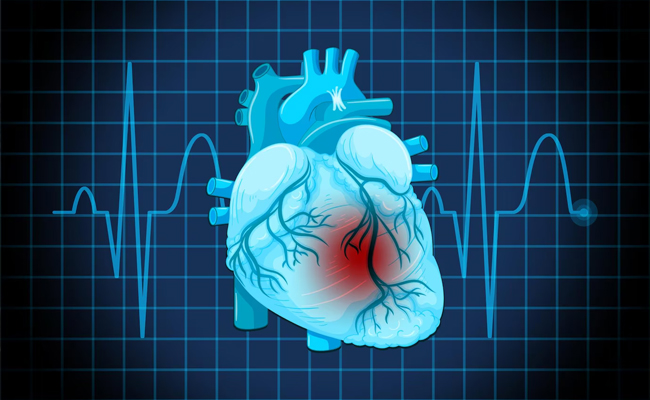Gold Coast (The Conversation): In July 2023, rising US basketball star Bronny James collapsed on the court during practice and was sent to hospital. The 18-year-old athlete, son of famous LA Lakers’ veteran LeBron James, had experienced a cardiac arrest.
Many media outlets incorrectly referred to the event as a “heart attack” or used the terms interchangeably.
A cardiac arrest and a heart attack are distinct yet overlapping concepts associated with the heart.
With some background in how the heart works, we can see how they differ and how they’re related.
Understanding the heart
The heart is a muscle that contracts to work as a pump. When it contracts it pushes blood – containing oxygen and nutrients – to all the tissues of our body.
For the heart muscle to work effectively as a pump, it needs to be fed its own blood supply, delivered by the coronary arteries. If these arteries are blocked, the heart muscle doesn’t get the blood it needs.
This can cause the heart muscle to become injured or die, and results in the heart not pumping properly.
Heart attack or cardiac arrest?
Simply put, a heart attack, technically known as a myocardial infarction, describes injury to, or death of, the heart muscle.
A cardiac arrest, sometimes called a sudden cardiac arrest, is when the heart stops beating, or put another way, stops working as an effective pump.
In other words, both relate to the heart not working as it should, but for different reasons. As we’ll see later, one can lead to the other.
Why do they happen? Who’s at risk?
Heart attacks typically result from blockages in the coronary arteries. Sometimes this is called coronary artery disease, but in Australia, we tend to refer to it as ischaemic heart disease.
The underlying cause in about 75 per cent of people is a process called atherosclerosis. This is where fatty and fibrous tissue build up in the walls of the coronary arteries, forming a plaque. The plaque can block the blood vessel or, in some instances, lead to the formation of a blood clot.
Atherosclerosis is a long-term, stealthy process, with a number of risk factors that can sneak up on anyone. High blood pressure, high cholesterol, diet, diabetes, stress, and your genes have all been implicated in this plaque-building process.
Other causes of heart attacks include spasms of the coronary arteries (causing them to constrict), chest trauma, or anything else that reduces blood flow to the heart muscle.
Regardless of the cause, blocking or reducing the flow of blood through these pipes can result in the heart muscle not receiving enough oxygen and nutrients. So cells in the heart muscle can be injured or die.
But a cardiac arrest is the result of heartbeat irregularities, making it harder for the heart to pump blood effectively around the body. These heartbeat irregularities are generally due to electrical malfunctions in the heart. There are four distinct types:
1. ventricular tachycardia: a rapid and abnormal heart rhythm in which the heartbeat is more than 100 beats per minute (normal adult, resting heart rate is generally 60-90 beats per minute). This fast heart rate prevents the heart from filling with blood and thus pumping adequately
2. ventricular fibrillation: instead of regular beats, the heart quivers or “fibrillates”, resembling a bag of worms, resulting in an irregular heartbeat greater than 300 beats per minute
3. pulseless electrical activity: arises when the heart muscle fails to generate sufficient pumping force after electrical stimulation, resulting in no pulse
4. asystole: the classic flat-line heart rhythm you see in movies, indicating no electrical activity in the heart.
Cardiac arrest can arise from numerous underlying conditions, both heart-related and not, such as drowning, trauma, asphyxia, electrical shock and drug overdose. James’ cardiac arrest was attributed to a congenital heart defect, a heart condition he was born with.
But among the many causes of a cardiac arrest, ischaemic heart disease, such as a heart attack, stands out as the most common cause, accounting for 70 per cent of all cases.
So how can a heart attack cause a cardiac arrest? You’ll remember that during a heart attack, heart muscle can be damaged or parts of it may die. This damaged or dead tissue can disrupt the heart’s ability to conduct electrical signals, increasing the risk of developing arrhythmias, possibly causing a cardiac arrest.
So while a heart attack is a common cause of cardiac arrest, a cardiac arrest generally does not cause a heart attack.
What do they look like?
Because a cardiac arrest results in the sudden loss of effective heart pumping, the most common signs and symptoms are a sudden loss of consciousness, absence of pulse or heartbeat, stopping of breathing, and pale or blue-tinged skin.
But the common signs and symptoms of a heart attack include chest pain or discomfort, which can show up in other regions of the body such as the arms, back, neck, jaw, or stomach. Also frequent are shortness of breath, nausea, light-headedness, looking pale, and sweating.
What’s the take-home message?
While both heart attack and cardiac arrest are disorders related to the heart, they differ in their mechanisms and outcomes.
A heart attack is like a blockage in the plumbing supplying water to a house. But a cardiac arrest is like an electrical malfunction in the house’s wiring.
Despite their different nature both conditions can have severe consequences and require immediate medical attention.
Let the Truth be known. If you read VB and like VB, please be a VB Supporter and Help us deliver the Truth to one and all.
New Delhi (PTI): The India-Russia collaboration is not directed against any country and it is solely aimed at safeguarding the national interests of the two sides, Russian President Vladimir Putin has said against the backdrop of Washington's aggressive approach towards New Delhi and Moscow.
In the context of India's energy ties with Russia, Putin said certain "actors" dislike New Delhi's growing role in international markets in view of its close relations with Moscow and these elements are aiming to constrain India's influence for political reasons by imposing "artificial obstacles".
In an interview to India Today news channel that was released on Thursday evening, the Russian president, referring to Western sanctions against Moscow, said his country's energy cooperation with New Delhi largely "remains unaffected".
Putin landed in New Delhi this evening on a two-day visit to hold summit talks with Prime Minister Narendra Modi.
ALSO READ: PM Modi presents copy of Gita in Russian to Putin
His trip comes at a time India-US relations are going through possibly the worst phase in the last two decades after Washington imposed a whopping 50 per cent tariff on Indian goods, including 25 per cent levies for New Delhi's procurement of Russian crude oil.
"Neither me nor Prime Minister Modi, despite certain external pressure we face, have never approached our collaboration to work against someone," the Russian president said in response to a question on Washington's aggressive approach.
"President Trump has his own agenda, his own goals, whereas we focus on ours -- not against anyone, but rather aimed at safeguarding our respective interests, India's and Russia's interests," he said.
Rejecting Washington's objection to India procuring crude oil from Russia, Putin said if the US has the right to buy Russian fuel, why "shouldn't India have the same privilege".
"As for India's purchase of energy resources from Russia, I would like to note and have already mentioned this once, the US itself still buys nuclear fuel from us for its own nuclear power plants," Putin said.
The Russian president also responded to a question on India lowering procurement of crude oil from Russia in view of Western sanctions on Moscow.
ALSO READ: Russian president Putin arrives in Delhi on 2-day visit
"Well, there is a certain decline in overall trade turnover during the first nine months of this year. This is just a minor adjustment. Overall, our trade turnover stands almost at the same level as before," he said.
"I can't give you exact monthly figures right now, but trade in petroleum products and crude oil, as well as the production of petroleum products for consumers of oil, Russian oil, is running smoothly in India," he said.
Putin also said that India cannot be treated the way it was several decades back.
"Prime Minister Modi is not someone who succumbs to pressure easily. The Indian people can certainly take pride in their leader. This is absolutely obvious," he said.
"His stance is unwavering and straightforward, without being confrontational. Our goal is not to provoke conflict; rather, we aim to protect our lawful rights. India does the same," he said.
On the Ukraine conflict, Putin said he believed the US is actively seeking a solution to this problem. "I am absolutely certain, with no doubt at all, he (Trump) sincerely aims for a peaceful resolution."
Putin said Trump genuinely wants to end the hostilities and prevent further loss of lives. "But there could also be political interests tied to ending the confrontation between Russia and Ukraine, or economic motives too."
On bilateral trade, Putin said over 90 per cent of "our transactions are already conducted in national currencies".
"While some complications arise due to the presence of numerous intermediaries, there are also solutions," he said.
The Russian president also complimented PM Modi's leadership.
"Our collaborative endeavours with Prime Minister Modi carry significant weight because they transcend our mutual ties," he said.
"Given its direct relevance to both nations, ensuring stability in key areas of engagement is crucial, as it helps secure the fulfilment of our objectives. Prime Minister Modi sets very challenging tasks for the country --and for himself in the first place, then for the administration, and eventually for the nation," he said.
The Russian president did not give a direct reply to a question on if India was looking at procuring additional batches of S-400 missile systems.
"India stands out as one of our reliable and privileged partners in this area. We are not merely selling something to India and India isn't merely buying something from us in the sphere of defence and security.
"It is a different level, a different quality of relations we have with India, and we value this. We see how India values this relationship too," he said.
Putin said Russia is not simply selling defence technology to India but it is sharing it with the country.
"It is a very rare thing to see in the sphere of military-technical cooperation. It speaks to the level of trust between the two countries and the level of trust between the two peoples.
"We have a broad portfolio indeed, including naval construction, rocket and missile engineering, and aircraft engineering," he added.





